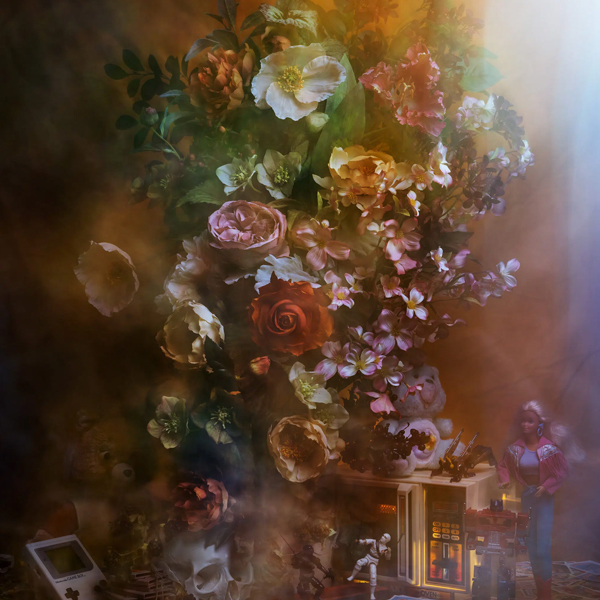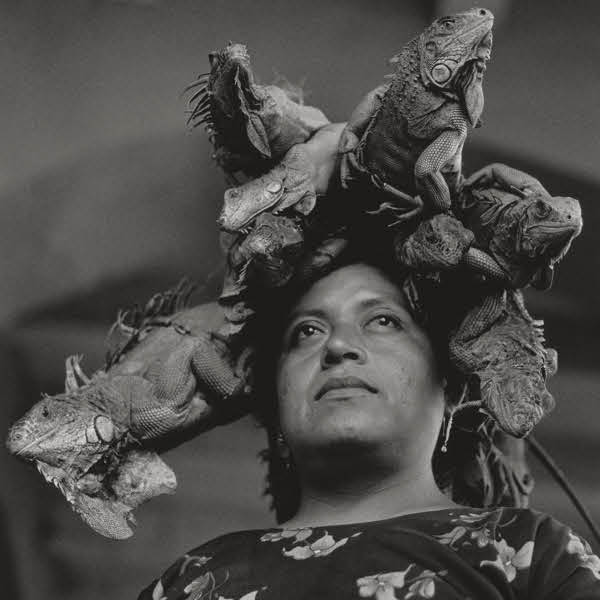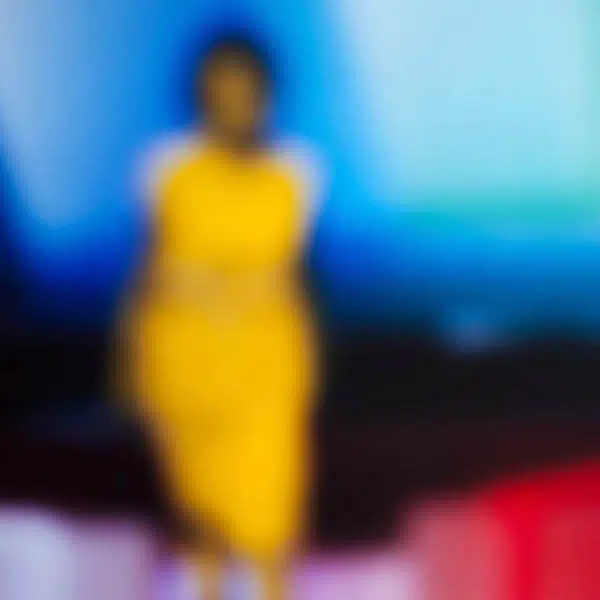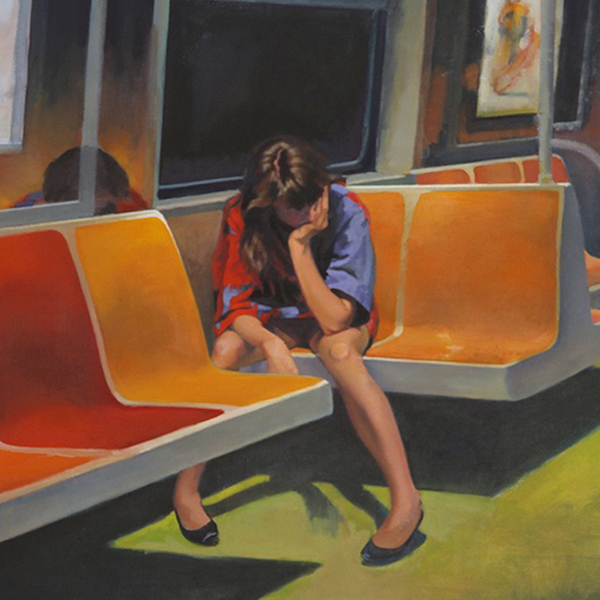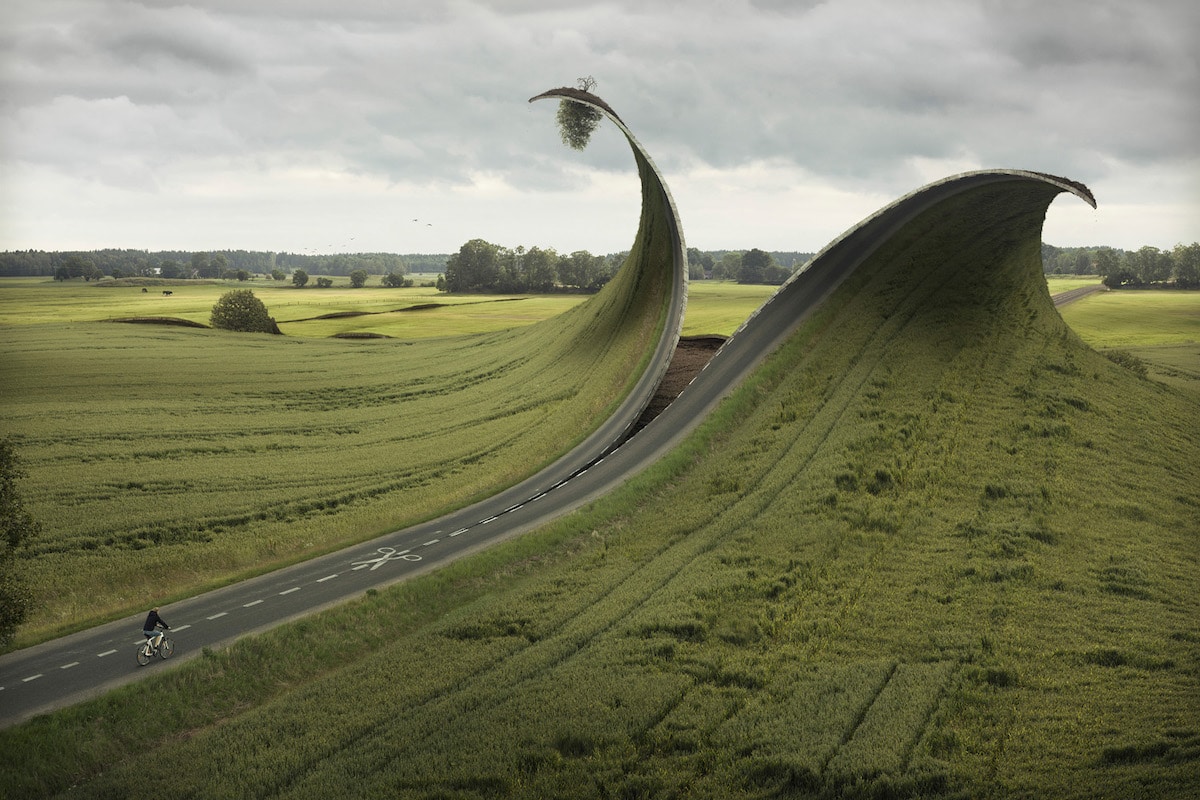
Cut & Fold, 2012
This post may contain affiliate links. If you make a purchase, My Modern Met may earn an affiliate commission. Please read our disclosure for more info.
A cyclist glides down the road only to find out that the path forward has been cut in half like scissors to a piece of paper. In a different part of the world, a man approaches the shore in his canoe and discovers that the ripples have shattered the water into mirrored glass shards. These surreal moments are the subjects of two fantastical photographs by Erik Johansson. Since the year 2000, he has crafted impossible photography using a combination of his own images and photo manipulation techniques in Adobe Lightroom and Photoshop. A master at retouching, Johansson can make even the most bizarre settings appear to have really happened.
There is immense planning that goes into every one of Johansson’s works. He starts with a sketch and a simple idea and builds from there. First is the planning stage, which can take between a few days to several months or even years. “This step also includes problem-solving, how to make the perspective, reflections, materials, and light etc. realistic,” he explains. After the planning is complete, Johansson shoots and collects the material he’ll need to bring the piece to life. He never uses stock photography, as he always wants control over all of his photos—especially when it comes to keeping the same light and perspective. Once the first two steps are done, he pieces all of the collected images together. Although this sounds like the most intensive part, according to Johansson, it's the easiest step.
Johansson’s artistic abilities have afforded him opportunities to work with clients like Adobe, Google, and National Geographic. He always had an interest in fine art, and when he was 15 he received his first digital camera. “Being used to the process of drawing,” he recalls, “it felt quite strange to be done after capturing a photo, it wasn't the process of creating something in the same way as a drawing. You didn't start with white empty paper; once you pressed the trigger you were done. I felt like I wanted to do something more to the photos, where pressing the trigger would only be the start.”
When it came time to enter college, Johansson opted to study computer engineering. “I didn't have any plans on doing the photography for a living, I couldn't imagine it to be a real profession, it was just a fun hobby and didn't really believe that fun and work could be combined.” During school, however, he continued to hone his artistic voice and techniques and gradually gained recognition for his imaginative works and retouching skills. Johansson eventually turned to his once-pastime into a thriving career and one where he continues to translate his observations, ideas, and influences from artists like M.C. Escher, René Magritte, and Rob Gonsalves.
We spoke to Johansson about how he beats creative block, his most memorable works, and what’s on the horizon for him. Scroll down to read our exclusive interview.
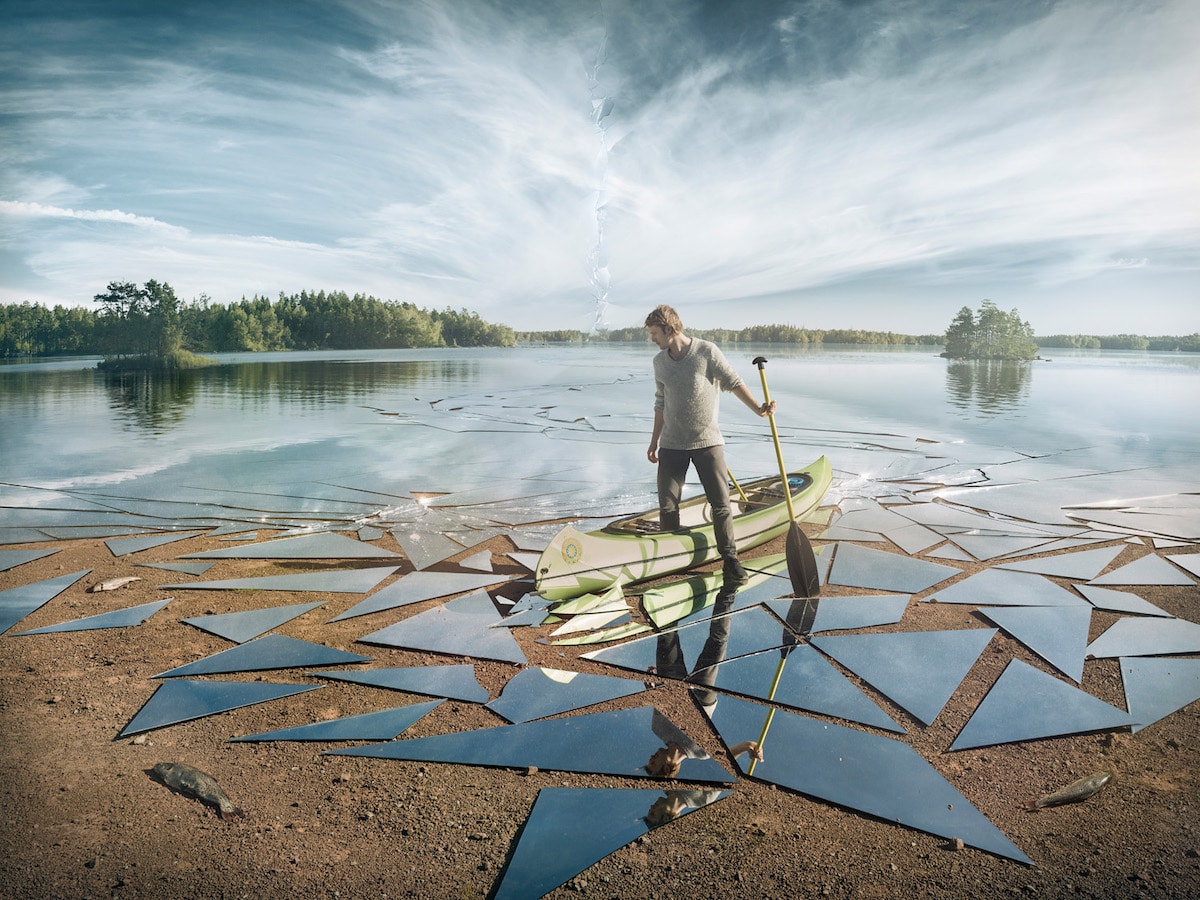
Impact, 2016
Where do you find inspiration?
The inspiration for creating these images comes mostly from within, I live in a world that gives me impressions but my brain processes those impressions to make the idea. In order to get inspired, I often try to travel, go to art exhibitions but also just stop and look out the window from the bus. Many of us are too busy these days, attention addicts; to just put away the smartphone or computer can often be enough to let the ideas start to flow.
Your work has a narrative bend to it. Do you look to literature to help inform your work?
My personal favorite stories are usually the upcoming projects. I'm constantly developing and try to push both the stories and the technical aspect of what is possible. The most important part of my work, except for realism, is the story that the image should tell. The story is, however, often up to the viewer to decide. I just give a title as a clue. I do get a lot of inspiration from children's books. I especially like the ones by the Swedish illustrators Sven Nordqvist and Elsa Beskow.
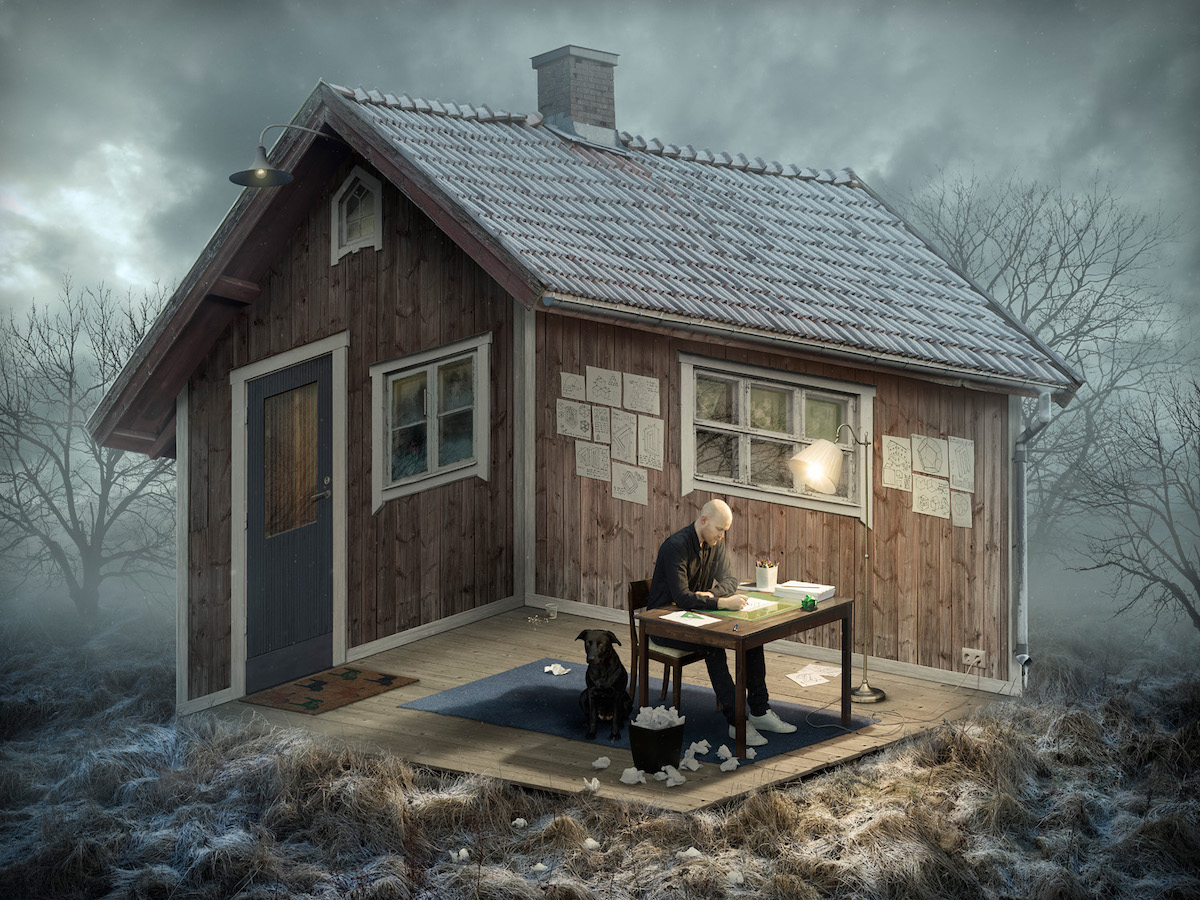
The Architect, 2015
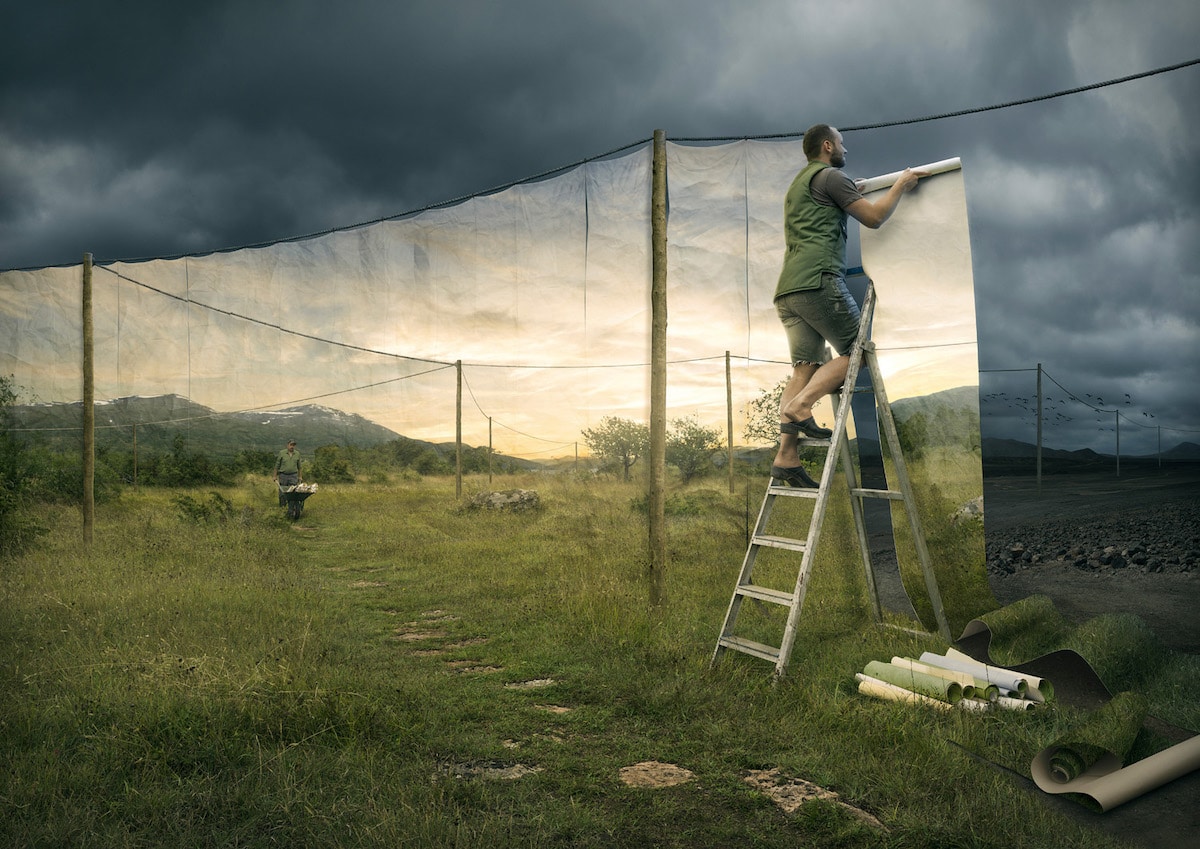
The Cover-Up, 2013
Is there ever a time you experienced a creative block?
I definitely have, it’s something that comes and goes.
How did you get past it?
In my experience, the best thing to do is just to do something completely different. I like bouldering, taking walks, running, etc. I also always sketch down ideas as they come and when I don’t feel creative I can just go back to these sketchbooks to see if I can get into the right mode for creating again.
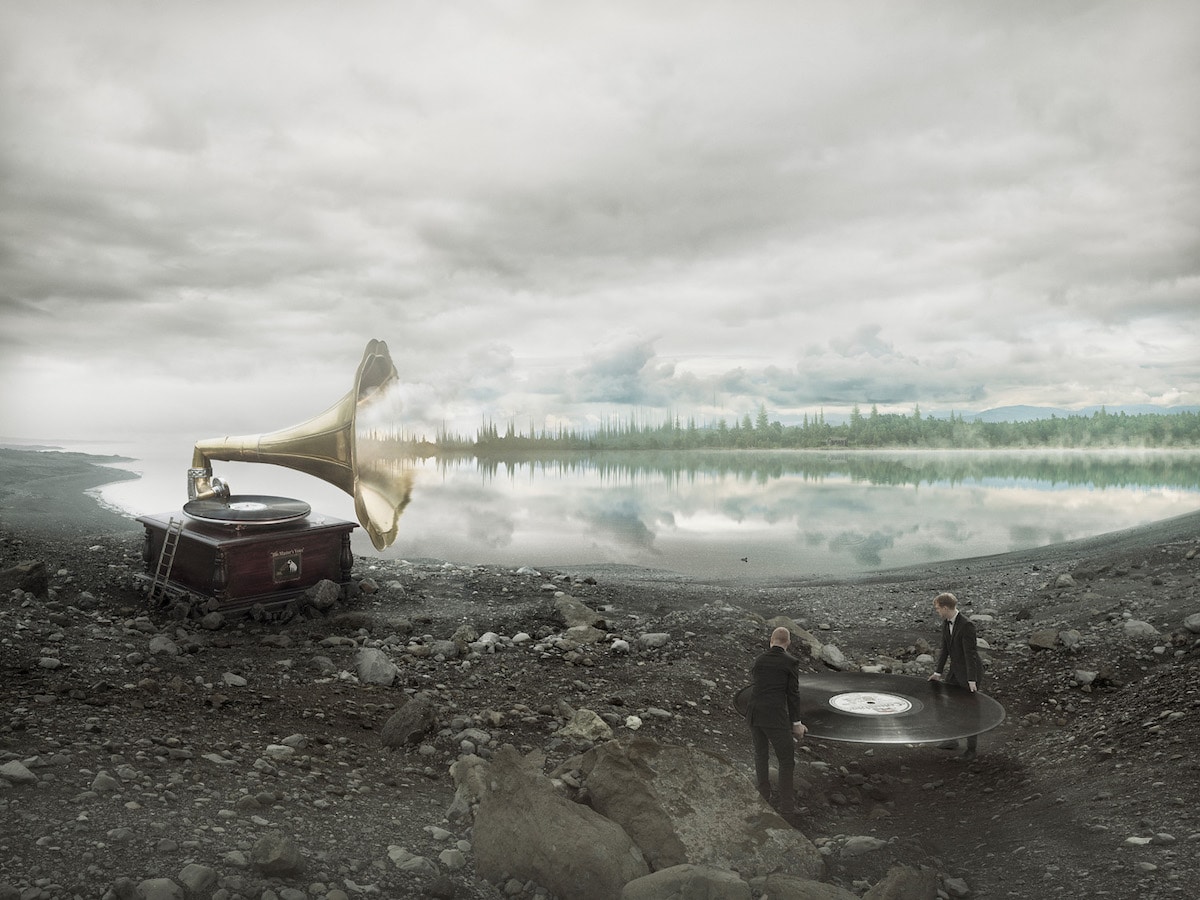
Soundscapes, 2015
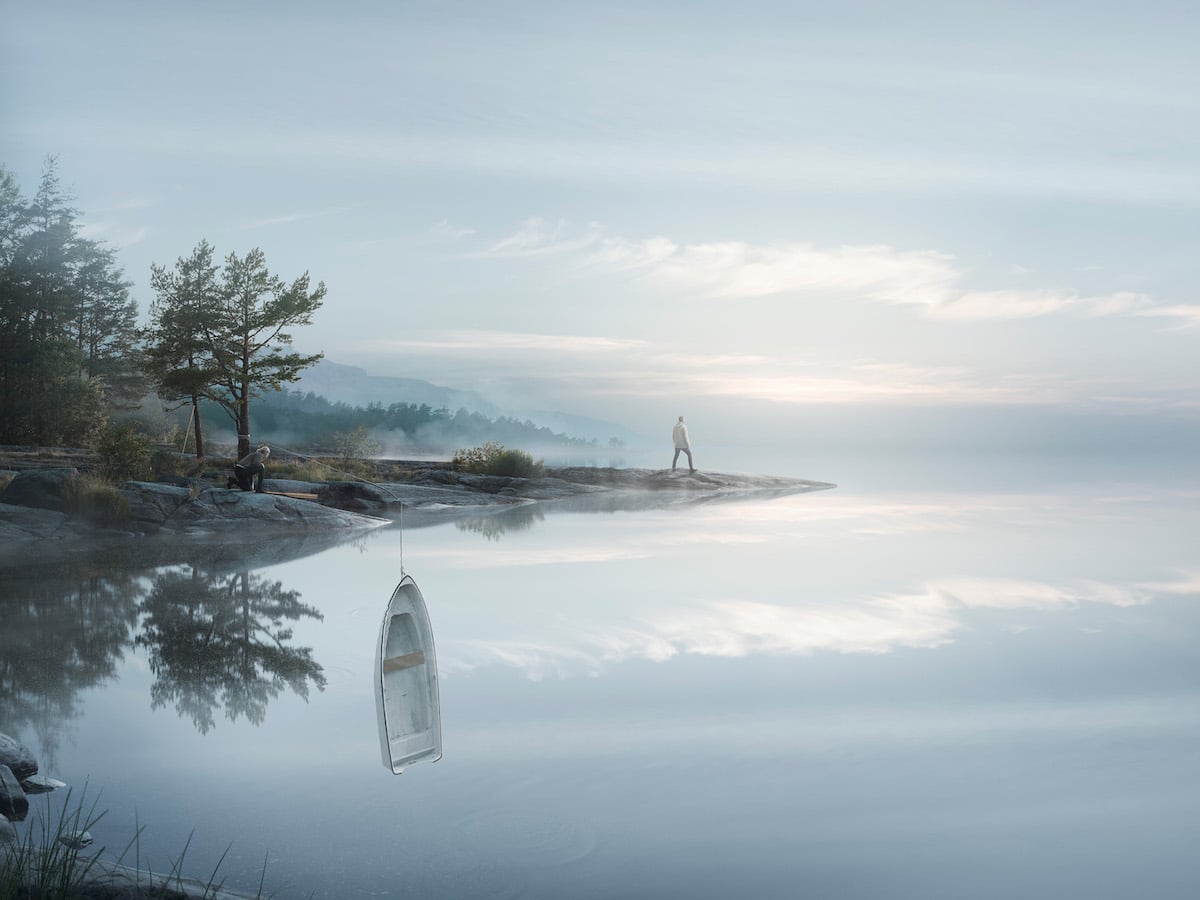
Endless Reflections, 2015
Your work pays special attention to the landscape. How does where you have lived (and currently live) inspire your image making?
I constantly come back to places of my childhood, places I know from when I grew up. I think it's also a way for me to create some kind of consistency in my work, that it's not just surreal worlds from here and there but that they somehow seem to take place in the same universe. Places I have lived and live still inspire me as well and I do shoot material there as well but Sweden is still my main subject.
You said that you don't use stock photography in your work. What are some of the strangest things you've had to shoot in order to realize an image?
Every project is a challenge of its own but I do tend to try to work more and more with props these days. For an upcoming project, I created a 1.2-meter (nearly four feet) aluminum tweezer just for a single image. It may sound unnecessary, but I think it helps the story I want to tell, makes it easier for the model to relate to the story and the end result looks more realistic.
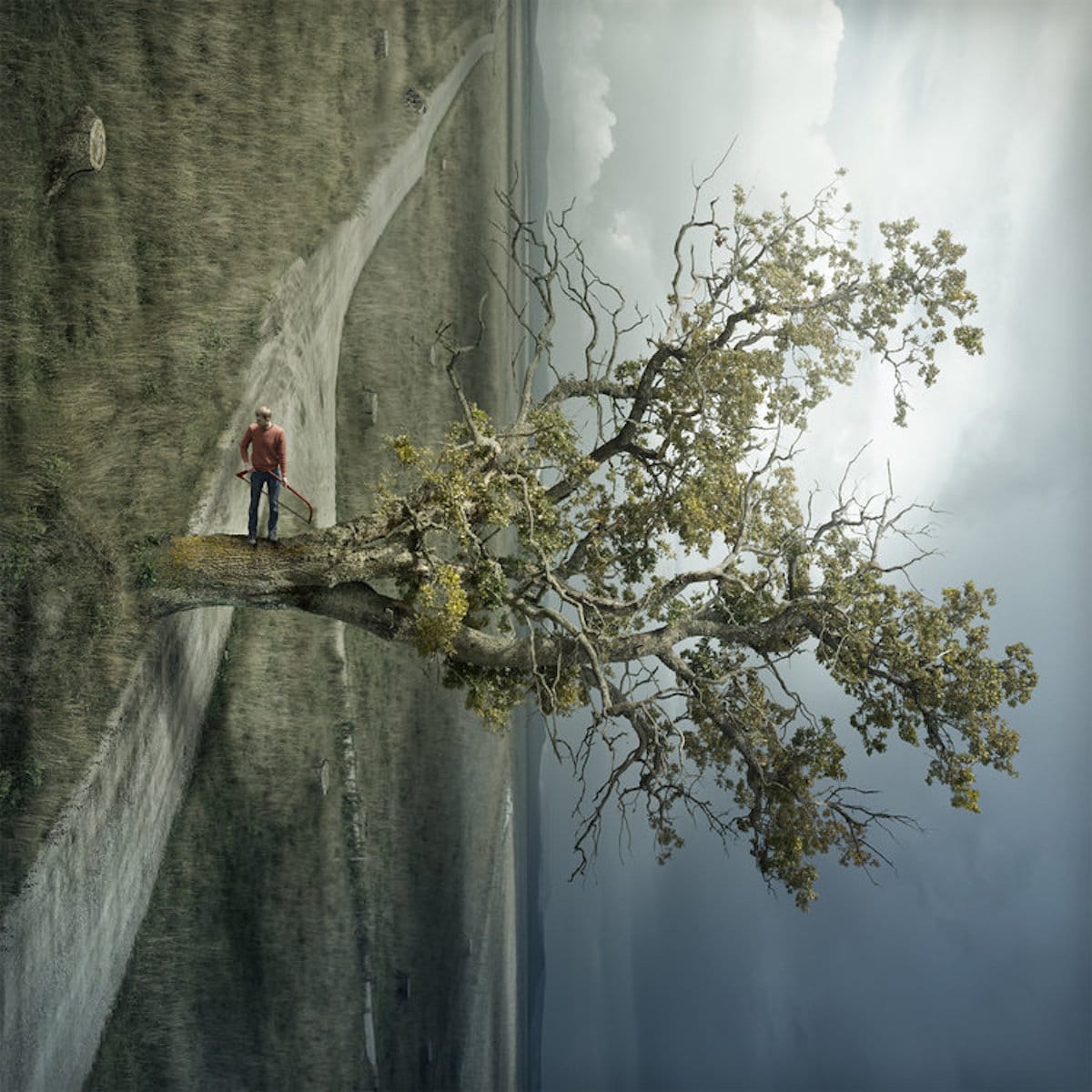
We Saw, 2019
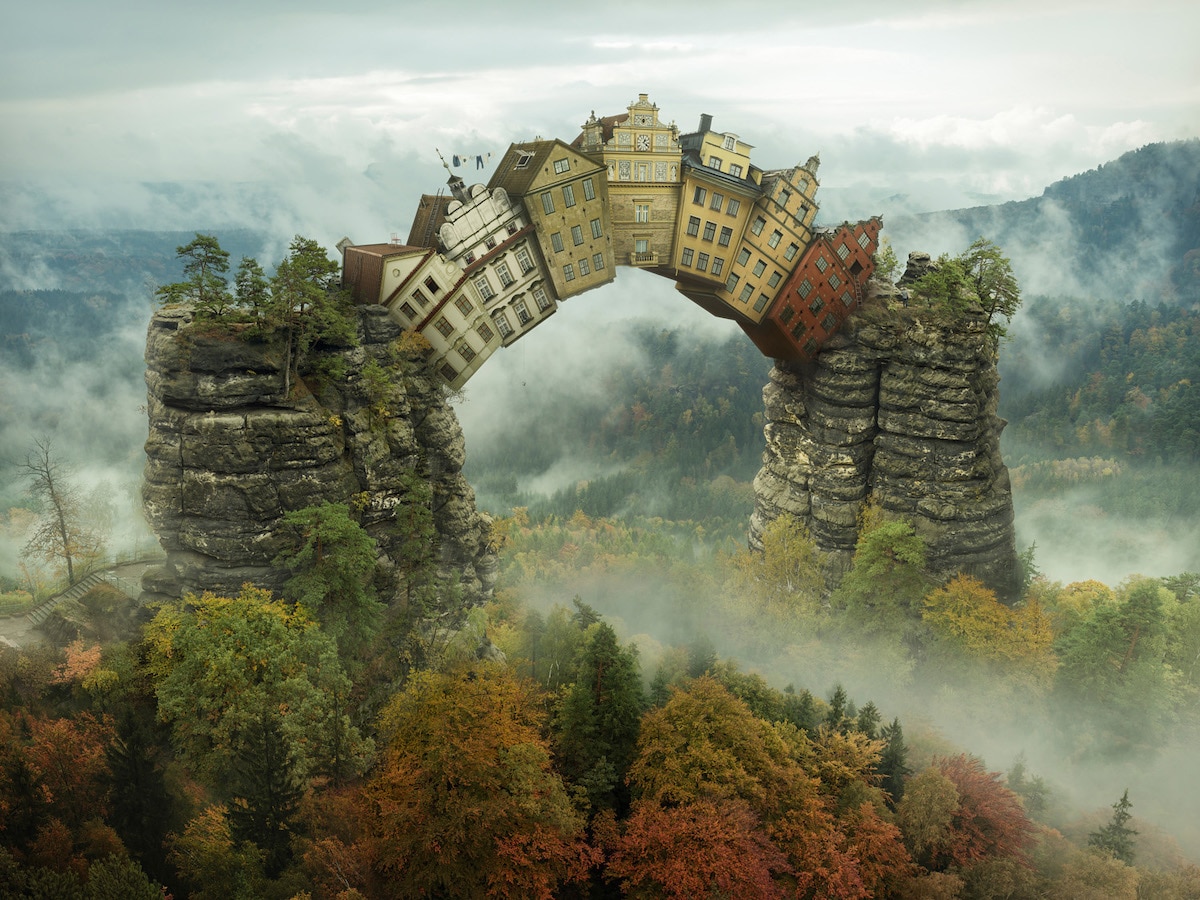
Self-Supporting, 2017
You have obviously spent a great deal of time thinking about how and why you make the work that you do. Why do you think this is important?
I guess it started simple but slowly became more and more complex. I like to challenge myself in what I do, I want to see if I can take it to another level and how far I can push something.
How has doing this helped you?
I never studied art and I have mostly learned by trying and failing. It's not always the fastest way to learn, but it sure is a good way to learn. The more complex the projects become the more planning they require. If a project is well planned the shooting and post-production part of the project gets a lot easier as well.
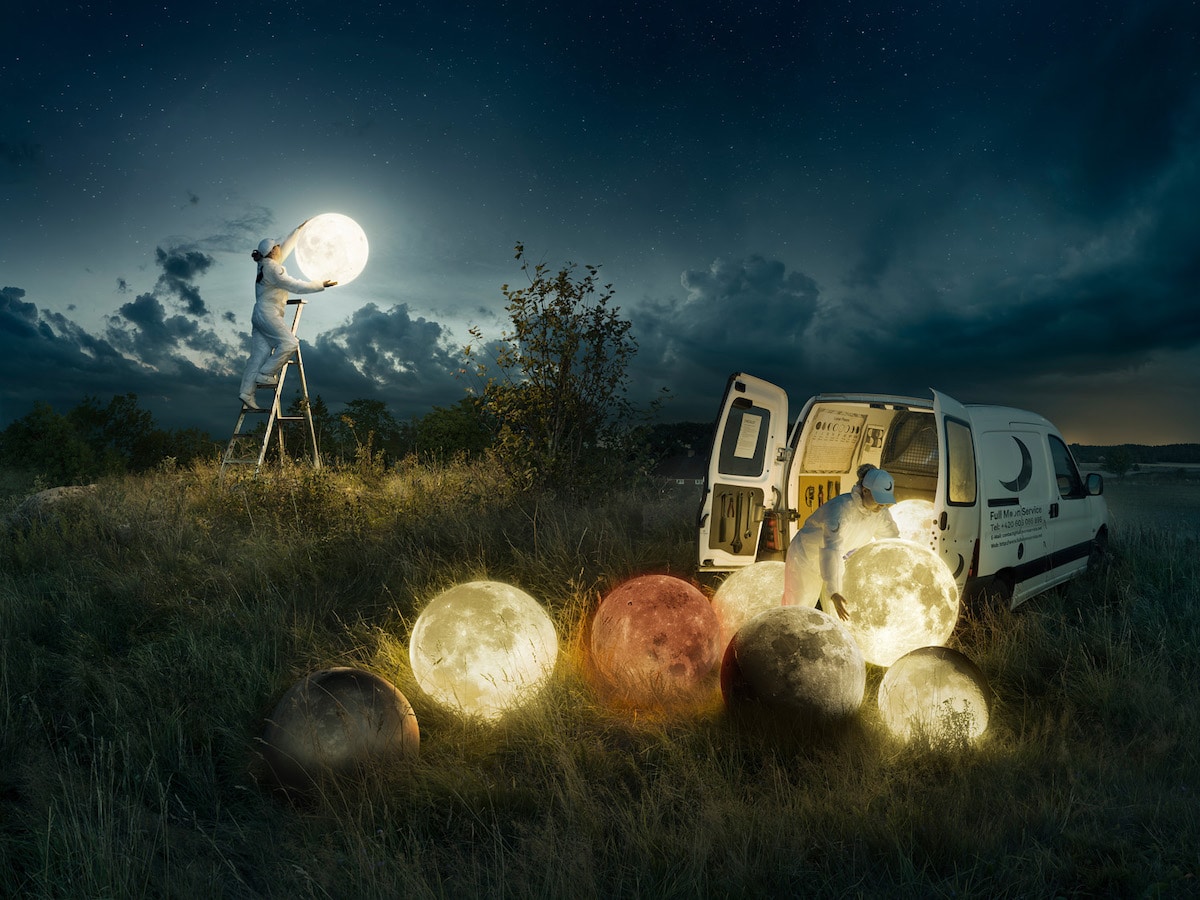
Full Moon Service, 2017
What is your most memorable piece?
It's hard to pick one, but as I try to build up more and more of the scenes for real, it can be very magical when you shoot the scene and everything is ready for it. Full Moon Service is a good example of this. I brought out 7 rice lamps, two models, and the car out in a field on a Swedish summer evening.
What about it is so special to you?
As we were waiting for the evening to get darker I really could see the image come to life in front of my eyes, that was very special to me as I managed to capture that feeling quite close in the final piece.

Cutting Dawn, 2016
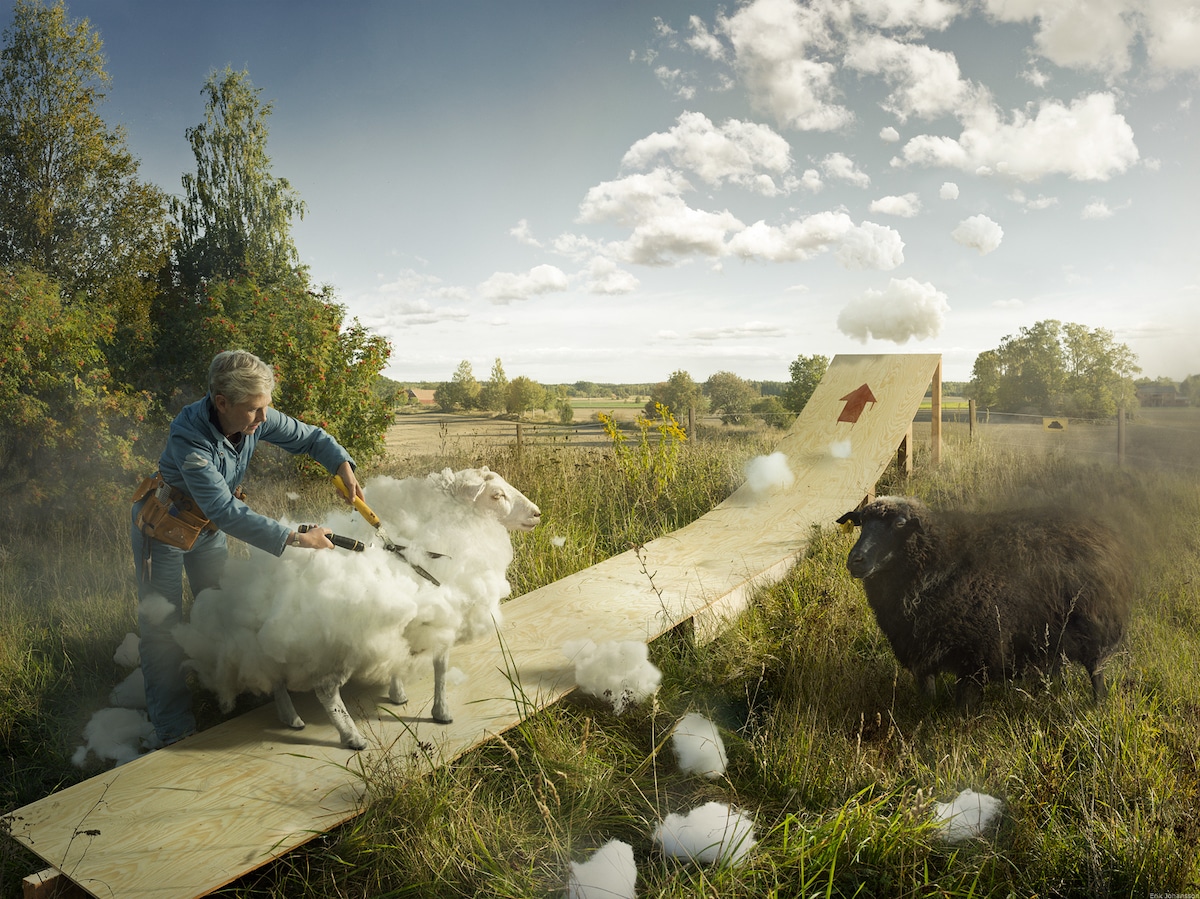
Cumulus & Thunder, 2017
What's on the horizon for you? Any exciting projects you can tell us about?
I just started working on my second book which will be both larger physically and content-wise than my first book that I released a few years ago. At the moment, I'm trying to finish as many half-finished projects as I can for that, so it looks like it can be one of my most productive years so far. I also have an exhibition coming up in Seoul, South Korea at the beginning of June and some other early-stage exhibition plans at other locations as well. You'll see a lot more coming from me soon.
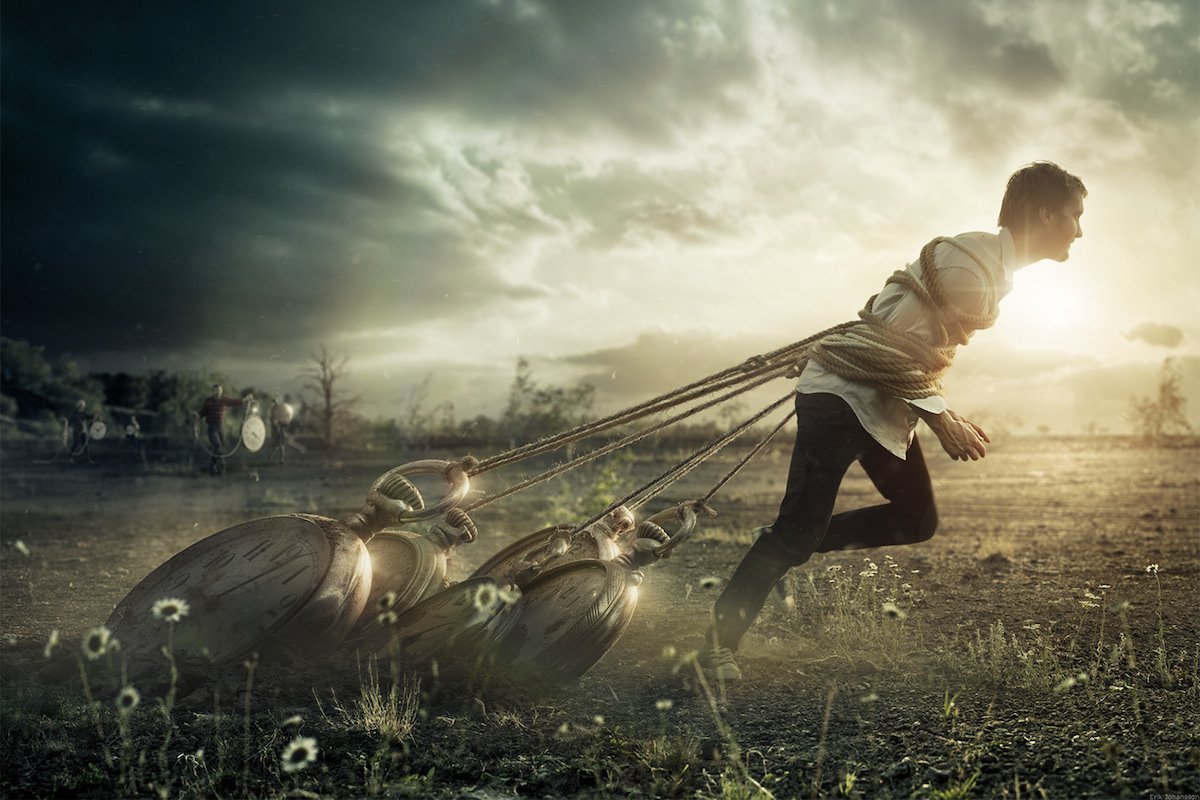
Give me Time, 2019
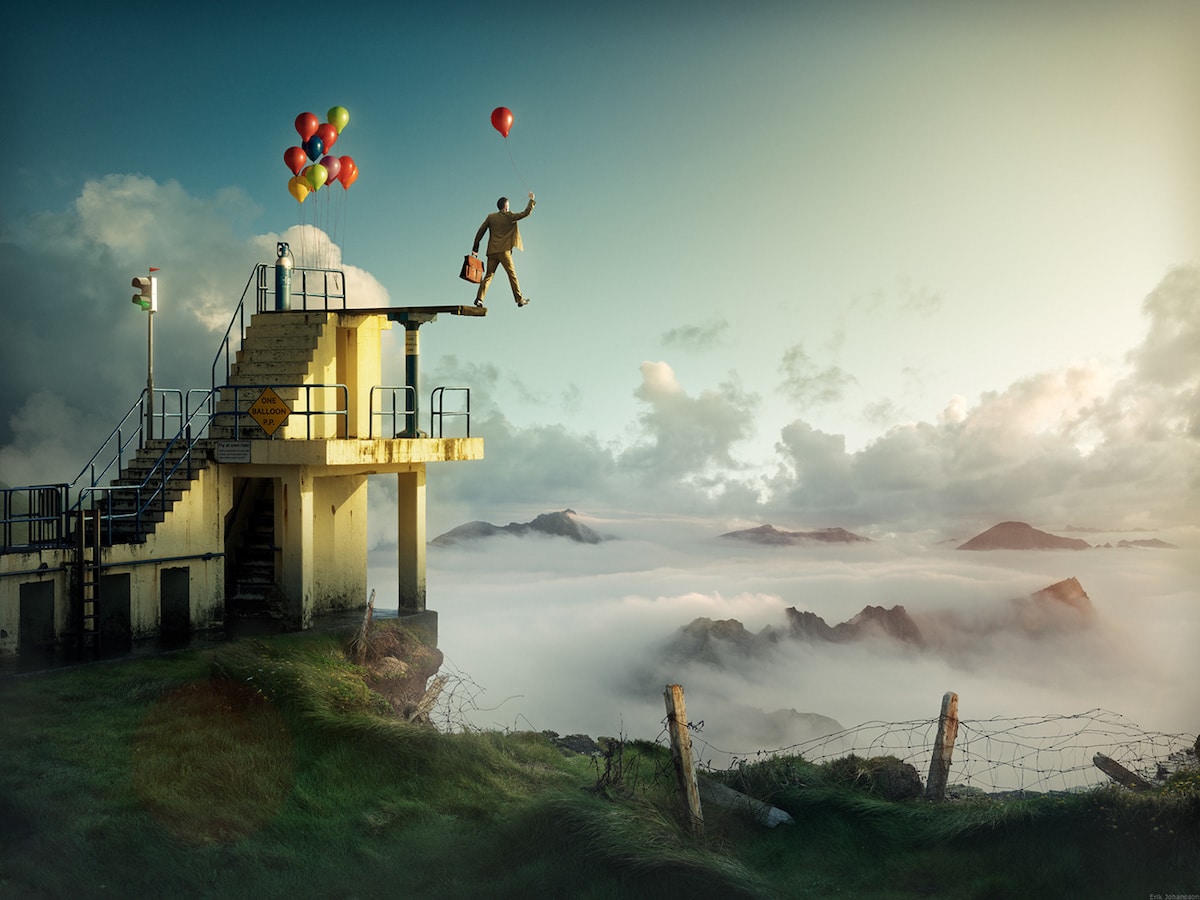
Leap of Faith, 2018












































































